After a month of dry weather around Pittsburgh it was a pleasant surprise to arrive at Linn Run State Park and find plenty of gilled mushrooms growing in the parking lot. It just got better as we headed up the hill finding a wide variety of species. The table at the end of the walk was a joy to see with so many different mushrooms, of all sorts of colors, from tinny to large.
One the smaller side there were some pretty orange Entoloma quadratum and Cantharellus minor around the parking lot.
We found at least 8 species of Amanita. The most beautiful mushroom of the day went to a Amanita jacksonii specimen. Using a chemical field test we determined that the white destroying angle did not stain yellow with KOH leading to the identification of Amanita magnivelaris.
We found a few edible species including quite a few Cantharellus appalachiensis, one of which is pictured in the slide show that had a very interesting false gill presentation.There was also a chicken of the woods (Laetiporus sulphureus), a lone gem studded puffball (Lycoperdon perlatum) and some black staining polypore (Meripilus sumstinei).
On the fun side there were a couple of insect attacking species with a Cordyceps militaris (Trooping Cordyceps) and a crane fly that had been infected with the white Erynia sepulchralis.
I find that the mushrooms walks and mycology very rewarding and sometime useful in unexpected ways. Old specimens of Trichaptum biforme (Violet Toothed-Polypore) can be infected with another species, Phaeocalicium polyporaeum, that fruits in tiny black pins on the top surface of the mushroom. I’ve been looking for it for some time. A specimen was found on the walk but when I looked I could not see the pins with out a magnifying glass. I now know that I need to visit the optician and update my prescription. How useful was that!
Thanks to the 20 or so people who joined the walk on this fine day and found so many interesting mushrooms.
Species list entered by Richard Jacob. Species identified by Robert Bosiljevac, Richard Jacob and Tom McCoy from MAW.
Fungi:
[icon style=”camera”] Amanita amerirubescens (Blusher),
[icon style=”camera”] Amanita brunnescens var. pallida (Cream Colored Cleft-foot Amanita),
[icon style=”camera”] Amanita farinosa (Powder Cap Amanita),
[icon style=”camera”] Amanita flavoconia (Yellow Patches),
[icon style=”camera”] Amanita jacksonii (North Eastern American Caesars Mushroom),
[icon style=”camera”] Amanita magnivelaris (),
[icon style=”camera”] Amanita vaginata var. vaginata (Grisette),
[icon style=”camera”] Artomyces pyxidatus (Crown-tipped Coral Fungus),
[icon style=”camera”] Aureoboletus innixus (Clustered Brown Bolete),
[icon style=”camera”] Bjerkandera adusta (Smoky Polypore),
[icon style=”camera”] Calocera cornea (Yellow tuning fork),
[icon style=”camera”] Cantharellus appalachiensis (Appalachian Chanterelle),
[icon style=”camera”] Cantharellus minor (Small Chanterelle),
[icon style=”camera”] Ceratiomyxa fruticulosa (Coral Slime),
[icon style=”camera”] Clavulinopsis aurantiocinnabarina (),
[icon style=”camera”] Collybiopsis confluens (Clustered Toughshank)
[icon style=”camera”] Coprinellus disseminatus (Trooping Crumble Cap),
[icon style=”camera”] Cordyceps militaris (Trooping Cordyceps),
[icon style=”camera”] Cortinarius iodes (Iodine Cort / Viscid Violet Cort),
[icon style=”camera”] Crepidotus applanatus (Flat Crep),
[icon style=”camera”] Crepidotus mollis (Jelly Crep/Soft Stumpfoot),
[icon style=”camera”] Crinipellis zonata (Zoned Hairy Parachute)
[icon style=”camera”] Crucibulum laeve (White-egg Bird’s-nest Fungus),
[icon style=”camera”] Cyathus striatus (Splash Cups),
[icon style=”camera”] Daedalea quercina (Thick-maze Oak Polypore),
[icon style=”camera”] Entoloma murrayi (),
[icon style=”camera”] Entoloma quadratum (),
[icon style=”camera”] Fuligo septica (Scrambled-egg Slime; Dog Vomit Slime),
[icon style=”camera”] Helvella macropus (),
[icon style=”camera”] Hygrophorus cantharellus (),
[icon style=”camera”] Lactarius griseus (),
[icon style=”camera”] Lactarius rufus (Rufous Milkcap),
[icon style=”camera”] Lactifluus gerardii (),
[icon style=”camera”] Laetiporus sulphureus (Chicken Mushroom; Sulphur Shelf),
[icon style=”camera”] Lycoperdon perlatum (Gem-studded Puffball),
[icon style=”camera”] Megacollybia rodmanii (Platterful Mushroom),
[icon style=”camera”] Meripilus sumstinei (Black-staining Polypore),
[icon style=”camera”] Mycena leaiana (Orange Mycena),
[icon style=”camera”] Neofavolus alveolaris (Hexagonal-pored Polypore),
[icon style=”camera”] Niveoporofomes spraguei (Green Cheese Polypore),
[icon style=”camera”] Omphalotus illudens (Jack-o’-lantern),
[icon style=”camera”] Phaeocalicium polyporaeum (Black Matchstick Fungus),
[icon style=”camera”] Pleurotus pulmonarius (Summer Oyster),
[icon style=”camera”] Polyporus badius (Black-footed Polypore),
[icon style=”camera”] Polyporus brumalis (Winter polypore),
[icon style=”camera”] Pseudocolus fusiformis (Stinky Squid),
[icon style=”camera”] Puccinia podophylli (May Apple Rust),
[icon style=”camera”] Ramaria stricta (),
[icon style=”camera”] Rickenella fibula (Orange Moss Agaric),
[icon style=”camera”] Russula crustosa (Green Quilt Russula),
[icon style=”camera”] Russula mariae (Purple-bloom Russula),
[icon style=”camera”] Russula ochroleucoides (),
[icon style=”camera”] Russula redolens (),
[icon style=”camera”] Schizophyllum commune (Split Gill),
[icon style=”camera”] Scutellina vitreol (Eyelash cup),
[icon style=”camera”] Syzygites megalocarpus (),
[icon style=”camera”] Tetrapyrgos nigripes (Black-footed Marasmus),
[icon style=”camera”] Trametes versicolor (Turkey-tail),
[icon style=”camera”] Trichaptum biforme (Violet Toothed-Polypore),
[icon style=”camera”] Tubifera magna (Flat Raspberry slime mold),
[icon style=”camera”] Tulasnella aurantiaca (),
[icon style=”camera”] Tylopilus alboater (Black Velvet Bolete),
[icon style=”camera”] Tylopilus rubrobrunneus (Reddish-Brown Bitter Bolete),
[icon style=”camera”] Xylaria polymorpha (Dead Man’s Fingers),
[icon style=”camera”] Xylobolus frustulatus (Ceramic Parchment)
Lichen:
[icon style=”camera”] Flavoparmelia caperata (Common greenshield lichen)
Species missing from list:
[icon style=”camera”] Amanita variicolor (), Possible ID.
[icon style=”camera”] Erynia sepulchralis (),
[icon style=”camera”] Sebacina incrustans (),
Cribraria sp. (slime mold)
Galerina vittiformis
peach Russula
small red Russula
yellow blobs – maybe not an Asco
Pluteus
Red Russula’s
Coprinopsis
+ more
Photos by Susan Bertoty and Richard Jacob.
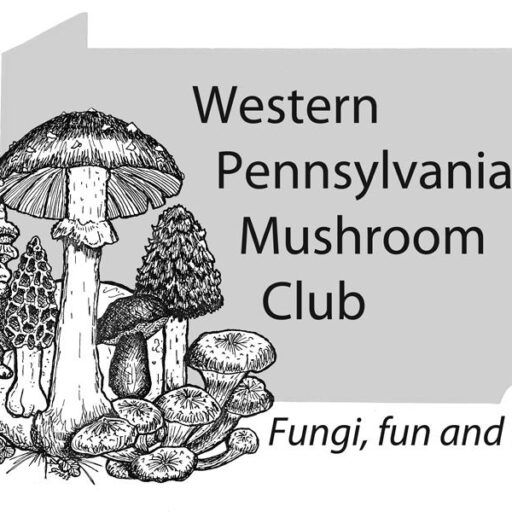
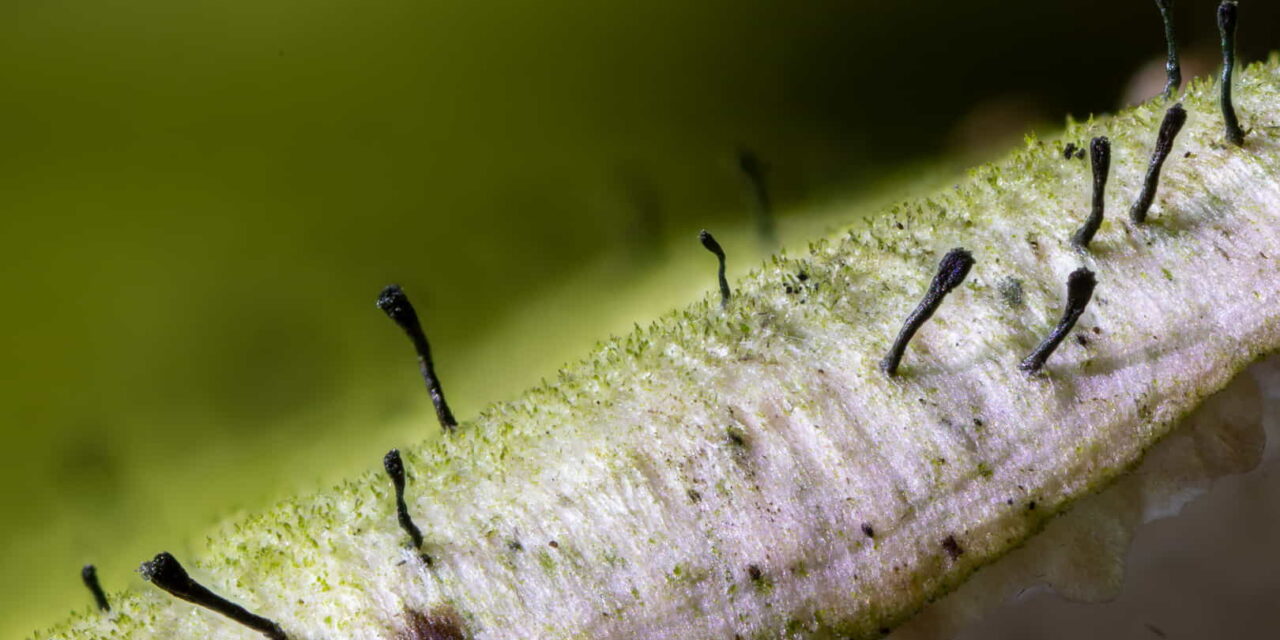






























































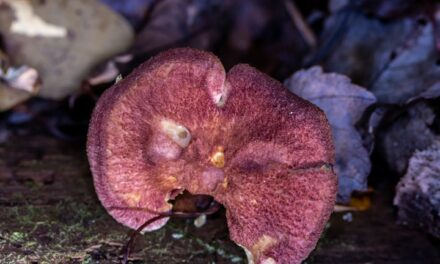
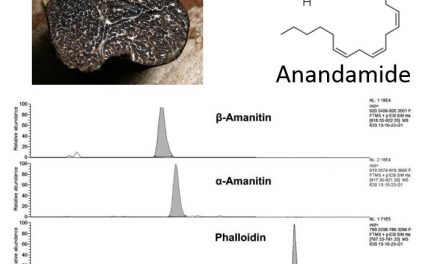
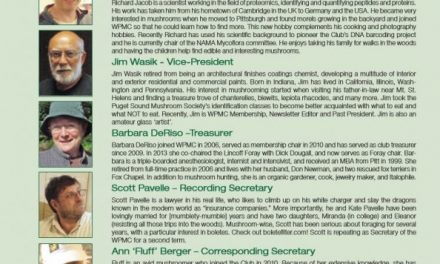
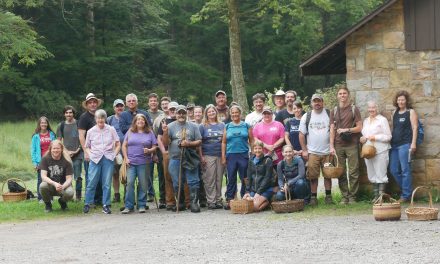

Recent Comments